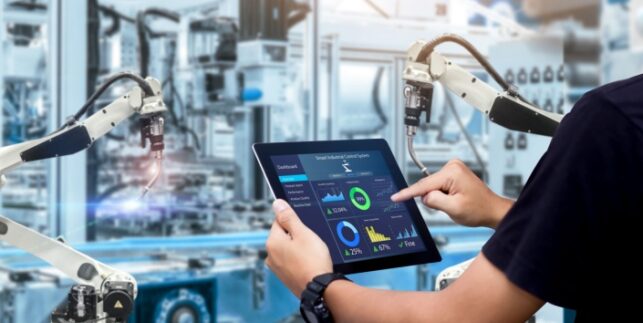Developing New Strategies in Food and Beverage Manufacturing to Increase Profitability

Food and beverage manufacturing is a highly competitive sector in which manufacturers work within tight margins to secure profitability. Many of the decisions these manufacturers make are focused on cost reduction, primarily by reducing giveaway and maintaining tighter thresholds. However, this is just one part of what manufacturers can do to improve their profitability.
While reducing giveaway is an essential goal for food and beverage manufacturers, focusing solely on that area leaves other opportunities on the table. A broader strategy allows manufacturers to capitalize on those opportunities to reduce costs in new, unexplored ways. Food and beverage manufacturers can include these areas in their overall strategy to improve profitability in this challenging landscape.
Material Forecasts and Pricing
Raw materials represent the largest category of cost for manufacturers. As such, they are the first place to look for potential cost reduction. Addressing giveaway does so indirectly, preventing raw materials from being wasted on production that doesn’t generate revenue for the manufacturer. However, there are opportunities to address raw material costs earlier in the production process.
Improving raw material forecasting capabilities is one such opportunity. Manufacturers can unlock significant savings during the procurement stage by developing a better understanding of their own needs. The most accurate forecasts let manufacturers enjoy better pricing, purchasing raw materials with opportune timing and avoiding any potential expedited delivery costs.
Digitalization in production scheduling can provide more accurate and longer forecasts. Real-time production monitoring captures the specific quantities of raw materials that go into different products and individual work orders. Over time, this provides clear and accurate insight that translates expected production demand into raw material requirements.
This data proves invaluable in determining pricing strategy as well. Food and beverage manufacturing, in particular, rides a very fine line between loss and profitability. Clear insight into actual raw material production for individual work orders lets manufacturers accurately assess the profitability of providing products at specific price points.
Operational Efficiency Through Transparency
Manufacturers that focus solely on the balance of raw materials in and products out fail to address potential savings that can be found on the shop floor. Improving operational efficiency can allow for increased production for the same overhead costs, ultimately improving profitability. Ensuring the best use of stakeholders and machines at any given time can have a significant impact.
Enabling transparency through digitalization is one way that manufacturers can do this. A lack of transparency and visibility can obscure inefficiency, making it more difficult to identify and act on opportunities. Stakeholders can’t realize their full value to the manufacturer when they don’t have access to the information and insight they need to do their jobs as efficiently as possible.
Consolidating production data within a single platform can greatly improve transparency throughout your operations. This removes barriers to information, ensuring that stakeholders can instantly access the information they need without navigating through disparate systems or requiring second-hand access through stakeholders in other roles or departments.
Digitalization can also enable the capture and analysis of production data in real-time. This allows for clear visualization of production progress and KPIs in an intuitive format. Stakeholders can remain constantly aware of what’s happening on the production floor, allowing them to gauge progress and act accordingly, ahead of any potential failures or bottlenecks.
All of this comes together to empower production teams to be as effective as possible. The improvement in operational efficiency means that manufacturers produce more with their available resources, improving their profitability.
Accelerated Decision-Making
Losses can quickly accumulate when something goes wrong on the production line. Digitalization provides the tools necessary for faster reactions and decision-making, letting manufacturers mitigate losses due to unexpected events as much as possible.
Real-time monitoring for material and energy consumption, quality, machine availability, and other important criteria prevent issues from going overlooked. Instead of discovering issues after an entire production run, stakeholders can receive instant alerts once specific thresholds are crossed.
These instant alerts can do a lot to prevent production losses on their own, but they also synergize with other benefits provided by digitalization. When something goes wrong, stakeholders can receive not just a notification but the necessary information and context needed to act. Entire workflows can be triggered in response to unexpected events, providing the fastest possible resolution.
The benefits of real-time monitoring apply to nearly every aspect of production. It’s a practical way to tighten thresholds on giveaway, along with a wide range of quality criteria. It can also prevent issues earlier in the process, ensuring that actual raw material consumption aligns with planned recipes to maintain consistency in production.
Recipe Management and Quality Control
In food and beverage manufacturing, recipe management is incredibly important to ensure consistent quality. Even minor changes in recipes can result in significant differences in the taste, appearance, and integrity of products. Manufacturers need tools to maintain consistency when dealing with individual recipes and to manage changes across different recipes.
Digitalization provides improved recipe management in a variety of ways. Real-time monitoring ensures that production follows recipes accurately and consistently. Direct integration with dosing and measurement equipment provides even greater control over production.
Aggregating real-time production data makes it possible to correlate changes in recipes with their impact on production. Over time, a wealth of historical data provides insight into how certain changes in recipes affect quality. This insight lets manufacturers set more accurate thresholds for raw material consumption, along with providing valuable feedback for new recipe development.
Accumulated data also provides the foundation for advanced benefits of digitalization, such as statistical process control. With the right solution, manufacturers can capitalize on historical production data to predict production issues before they happen. Through the advanced statistical analysis, the right solution can provide alerts based on indicators that a process is headed toward losing control.
Streamlined recipe management lets manufacturers assess the impact that recipe changes have on their products. Doing so accurately and quickly lets manufacturers maintain quality to reduce waste and ensure that their products are well received and continue to support their profitability.
Putting Strategies Into Action With Matics
Food and beverage manufacturers can put these strategies into action and achieve the full benefits of digitalization with Matics Real-time Operational Intelligence (RtOI). Manufacturers can aggregate, analyze, and act on production data to improve efficiency in day-to-day operations and develop their high-level strategies.
RtOI provides real-time monitoring and analysis, along with work management tools that let manufacturers obtain maximal value from production data. Full customization within the platform lets manufacturers develop unique KPIs, monitoring criteria, and automated workflows to suit their unique processes.
RtOI provides the bridging technology between operational platforms and factory floor production systems, something that is often missing in many of today’s food and beverage operations.
Matics RtOI is already in use by food and beverage manufacturers around the world.
Contact our team for a demo to see the difference digitalization can make for your operation.





